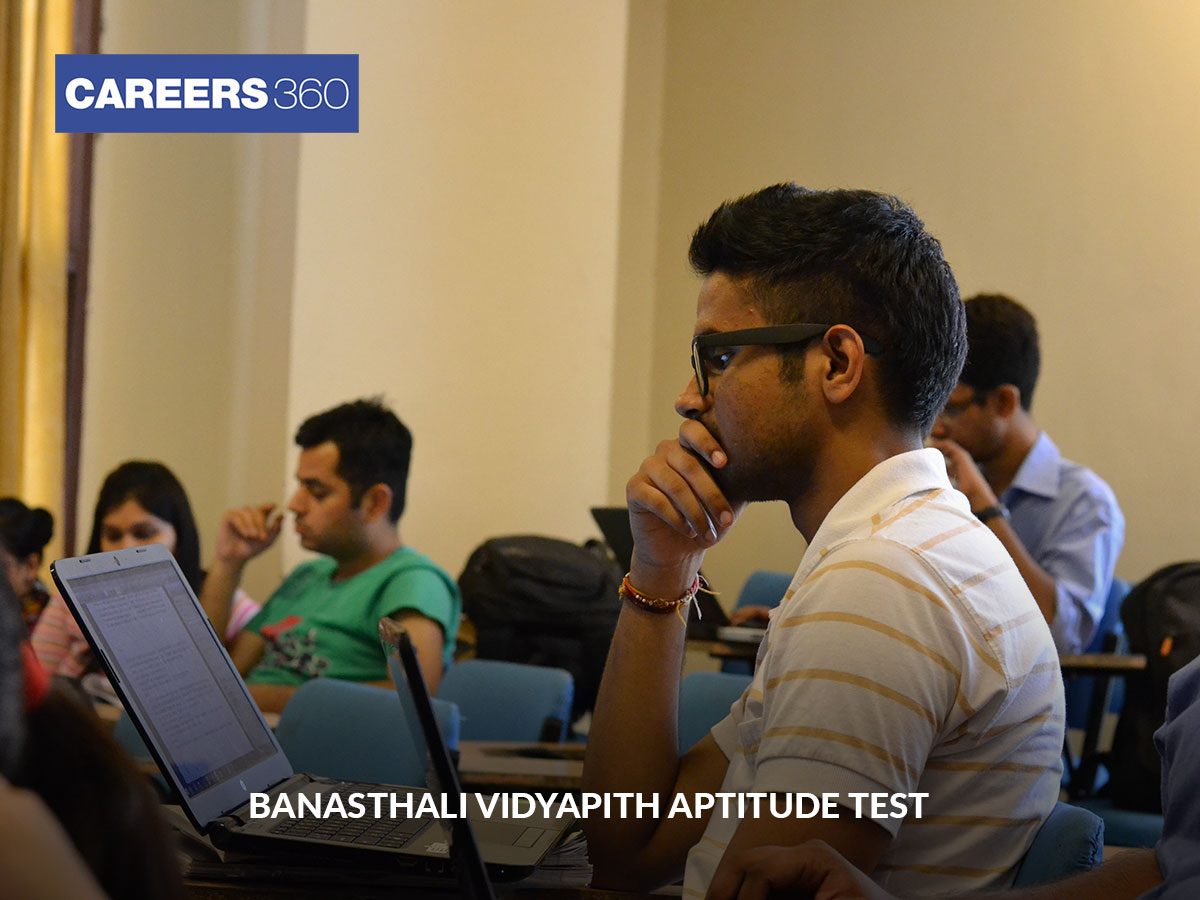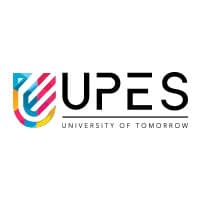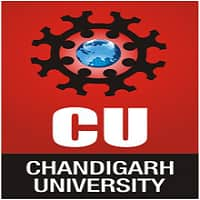UPES B.Tech Admissions 2025
Ranked #42 among Engineering colleges in India by NIRF | Highest CTC 50 LPA , 100% Placements | Last Date to Apply: 28th April
Banasthali University Aptitude Test 2025: Banasthali University has started the Banasthali University 2025 aptitude test application process on February 13 on its official website. The last date to submit the Banasthali University aptitude test admission form is April 30, 2025. Candidates can fill and submit the application form of Banasthali University 2025 admission form with late fee is May 15. The university has released the BUAT application form 2025 in both offline and online modes.
The university will conduct the Banasthali University 2025 aptitude test for various courses from June 21 to 23. The aptitude test of Banasthali University will be held for B.Tech, B.Sc, BEd, MBA, LLM, M.Tech, B.Pharm programmes. The Banasthali University 2025 application form is only open for women candidates. The BUAT 2025 exam will be held in online mode. It should be noted that all eligible applicants who wish to enrol in Banasthali Vidyapith are required to stay in a hostel. But, if an applicant is the daughter of a Vidyapith employee and rests on campus with her, or if they live in a nearby city or town within 25 kilometres, they are exempt from having to choose the hostel.
Contact details -
Banasthali Vidyapith,
P.O. Banasthali Vidyapith,
Rajasthan - 304 002
Email - admissions@banasthali.in
Phone - 01438-228384, 305655, 228990
Check: Direct link to fill Banasthali University Aptitude Test online application form 2025
Recommended: Civil Engineering: 10 IITs Placed Only 57% BTech In CE Students In Jobs In 2020-21. Read More
Recommended: Rank Below 2 Lakh In JEE Main? List Of NITs Where You Could Get A Seat. Read More
| Full Exam Name | Banasthali Vidyapith Aptitude Test |
| Conducting Body | Banasthali Vidyapith |
| Frequency Of Conduct | Once a year |
| Exam Level | University Level Exam |
| Languages | English |
| Mode Of Application | offline +1 more |
| Mode Of Exam | offline |
| Participating Colleges | 1 |
| Exam Duration | B.Tech:2 Hours 30 Minutes +4 more |
Banasthali Vidyapith Aptitude Test (session 2025)
B.Tech (session 2025)
B.Pharma (session 2025)
L.L.M (session 2025)
Mentioned below is the eligibility criteria for Banasthali Vidyapith B.Tech Aptitude Test 2024:
The eligibility criteria for the Banasthali Vidyapith B.Pharm 2025 Aptitude has been mentioned below.
Qualifying Marks and Examination- Must clear class 10+2 with 60% aggregate marks in Physics, Chemistry and Mathematics/Biology (PCM/PCB). For reserved candidates (SC/ST) qualifying marks is 40% aggregate marks in the qualifying examination. While candidates who have passed the qualifying examination from Banasthali University must have 50% aggregate marks in the qualifying examination.
Mentioned below is the eligibility criteria of Banasthali Vidyapith LLM Aptitude Test 2025
Qualifying Exam: Candidates must have done graduation in Law (5 year integrated law/3 year LL.B) from recognized institute/college/university.
Candidates can refer below the Banasthali University Eligibility Criteria 2025 for M.Sc Biotechnology Aptitude Test:
Qualifying Examination & Marks: Candidates must have 55 percent in Bachelor's degree in Biological/Physical/Pharmacy/Agriculture/Veterinary/Fishery science or in Engineering/Tech./Medicine.
Candidates willing to appear for Banasthali Vidyapith M.A English Aptitude Test 2025 will have to meet the following eligibility criteria:
Qualifying Examination: Candidates must have passed Bachelors degree from Banasthali or recognized by Banasthali University as equivalent thereto.

Banasthali Vidyapith has released the Banasthali University application form 2025 on February 13, in online mode. Candidates should fill and submit the Banasthali University 2025 admission form before the deadline, April 30. After filling the Banasthali University application form 2025, candidates have to pay the requisite application fee in the preferred mode. Given below is the steps to fill both online and offline application form of Banasthali Vidyapith 2025:
Step 1-REGISTRATION
Visit the official website of Banasthali University.
Candidates have to click on the ‘Admission’ tab.
Then, applicants should click on the ‘Admission Form’ tab.
Click on the ‘Higher Education Admission Form’
Applicants must provide necessary details and upload the documents.
Now the applicant has successfully registered for the BUAT exam.
STEP 2 – APPLICATION FORM FILLING
After completing the registration process, candidates have to fill the BUAT application form 2025 by providing their personal details, contact details, and educational details.
STEP 3 – PAYMENTS
The applicant is required to pay the required fee online through Internet banking, a debit card, or a credit card.
BUAT Application Fee 2025
Category | Application Fee |
Regular Fee | Rs 1000 |
Late Fee | Rs 1900 |
STEP 4 – PRINT APPLICATION FORM
To complete the application process, the applicant must take a printed copy of the completed Banasthali University application form 2025 and the fee receipt. The applicant should keep the printed application form for future reference.
Documents Required for BUAT 2025 Registration
Class 10 certificate
Class 12 certificate
Category certificate
Date of birth certificate
Passport size photograph
Steps to fill Offline Application Form of Banasthali Vidyapith 2025
Candidates will be available to fill the application form in offline mode in the following ways:
Method 1- Candidates can get application form and prospectus of Banasthali Vidyapith through the post. Candidates will have to send a DD/IPO for Rs.1000/- in favour of ‘Banasthali Vidyapith’ payable at Banasthali/Jaipur at given below address:
Secretary-Banasthali Vidyapith
P.O. Banasthali Vidyapith -304022
Rajasthan, India
However, candidates who will be sending the post for application should clearly mention the course they wish to apply for along with their name. Not only this, candidates should ensure that they mention the course they are applying for and their name at the reverse of the Bank Draft also.
Once receiving the application form, fill all the details and send it back to the authorities through the post.
Method 2- Candidates can get the application form and prospectus by visiting Surya Mandir, Banasthali Vidyapith in person upon payment of Rs 1000 in cash. Fill all the details in the application form and send it back to the authorities through the post.
Get education, career guidance; live webinars; learning resources and more
Subscribe Now| State | City |
| Delhi | New Delhi |
| Madhya Pradesh | Indore |
| Uttar Pradesh | Lucknow Aligarh |
| Rajasthan | Jaipur |
Ranked #42 among Engineering colleges in India by NIRF | Highest CTC 50 LPA , 100% Placements | Last Date to Apply: 28th April
Recognized as Institute of Eminence by Govt. of India | NAAC ‘A++’ Grade | Upto 75% Scholarships
Candidates who will be appearing for Banasthali Vidyapith B.Tech Aptitude Test can check the exam pattern below:
Banasthali B.Tech Exam Pattern 2024
| Mode of Exam | Online |
| Sections | 3 ( Physics & Chemistry, Mathematics and Logical Reasoning) |
| Duration | 2.5 hours (Physics & Chemistry- 60 minutes; Mathematics - 60 minutes; Logical Reasoning- 30 minutes) |
| Questions Asked | 100 ( Physics & Chemistry- 40; Mathematics - 40; Logical Reasoning- 20) |
| Marking Scheme | Every correct answer will be awarded 1 marks while -1/4 will be deducted for each incorrect response. |
Candidates who will be appearing for Banasthali Vidyapith B.Pharm Aptitude Test can check the exam pattern below:
Candidates who will be appearing for Banasthali Vidyapith LLM Aptitude Test 2025 can check the exam pattern below:
Candidates who will be appearing for Banasthali Vidyapith M.Sc Biotechnology Aptitude Test 2025 can refer the exam pattern below:
Refer the exam pattern of Banasthali Vidyapith M.A English 2025 Aptitude Test below:
Written Test will be for 70 marks. Candidates will be given 2.5 hours to complete the exam. Apart from aptitude test, Viva-Voce will be held for 30 marks. The Viva Voce will be held after the conclusion of test.
Also, authorities will award 100 marks for qualifying examination.
Physics: Unit 01
Physics: Unit 02
Physics: Unit 03
Physics: Unit 04
Physics: Unit 05
Physics: Unit 06
Physics: Unit 07
Physics: Unit 08
Physics: Unit 09
Physics: Unit 10
Physics: Unit 11
Physics: Unit 12
Physics: Unit 13
Physics: Unit 14
Physics: Unit 15
Physics: Unit 16
Chemistry: Unit 01
Chemistry: Unit 02
Chemistry: Unit 03
Chemistry: Unit 04
Chemistry: Unit 05
Chemistry: Unit 06
Chemistry: Unit 07
Chemistry: Unit 08
Chemistry: Unit 09
Chemistry: Unit 10
Chemistry: Unit 11
Chemistry: Unit 12
Chemistry: Unit 13
Chemistry: Unit 15
Chemistry: Unit 16
Chemistry: Unit 17
Chemistry: Unit 18
Chemistry: Unit 19
Chemistry: Unit 20
Chemistry: Unit 21
Chemistry: Unit 22
Mathematics: Unit 01
Mathematics: Unit 02
Mathematics: Unit 03
Mathematics: Unit 04
Mathematics: Unit 05
Mathematics: Unit 06
Mathematics: Unit 07
Mathematics: Unit 08
Mathematics: Unit 09
Mathematics: Unit 10
Mathematics: Unit 12
Logical reasoning: Unit 01
Physics: Unit 01
Physics: Unit 02
Physics: Unit 03
Physics: Unit 04
Physics: Unit 05
Physics: Unit 06
Physics: Unit 07
Physics: Unit 08
Physics: Unit 09
Physics: Unit 10
Physics: Unit 11
Physics: Unit 12
Physics: Unit 13
Physics: Unit 14
Physics: Unit 15
Physics: Unit 16
Chemistry: Unit 01
Chemistry: Unit 02
Chemistry: Unit 03
Chemistry: Unit 04
Chemistry: Unit 05
Chemistry: Unit 06
Chemistry: Unit 07
Chemistry: Unit 08
Chemistry: Unit 09
Chemistry: Unit 10
Chemistry: Unit 11
Chemistry: Unit 12
Chemistry: Unit 13
Chemistry: Unit 15
Chemistry: Unit 16
Chemistry: Unit 17
Chemistry: Unit 18
Chemistry: Unit 19
Chemistry: Unit 20
Chemistry: Unit 21
Chemistry: Unit 22
Biology: Unit 01
Biology: Unit 02
Biology: Unit 03
Biology: Unit 04
Biology: Unit 05
Biology: Unit 06
Biology: Unit 07
Biology: Unit 08
Biology: Unit 09
Biology: Unit 10
Logical reasoning: Unit 01
Biology: Unit 01
Biology: Unit 02
Biology: Unit 03
Biology: Unit 04
Biology: Unit 05
Biology: Unit 06
Biology: Unit 07
Biology: Unit 08
Biology: Unit 09
Biology: Unit 10
Biology: Unit 11
Biology: Unit 12
Biology: Unit 13
Chemistry: Unit 01
Chemistry: Unit 02
Chemistry: Unit 03
Chemistry: Unit 04
Chemistry: Unit 05
Chemistry: Unit 07
Chemistry: Unit 08
Chemistry: Unit 09
Chemistry: Unit 10
The university will release the Banasthali Vidyapith aptitude test 2025 admit card in online mode. Candidates who have submitted the application form can download the Banasthali University 2025 aptitude test by using their login credentials. The Banasthali University aptitude test 2025 admit card mentions various key details such as candidate’s roll number, exam centre address, timing, name, etc. Candidates must bring their Banasthali Vidyapith aptitude test admit card 2025 with themselves along with the valid ID proof to the exam centre. Without the Banasthali University aptitude test 2025 admit card, candidates will not be allowed to appear in the entrance exam.
To download the admit card of Banasthali University aptitude test 2025 hall ticket candidates can follow the given steps.
Visit the official website of Banasthali Vidyapith.
Click on the ‘Admission’ section.
Now, click on the ‘BUAT admit card’.
Now, enter user name and password.
The BUAT admit card 2025 will appear on the screen.
Download the BUAT hall ticket PDF for future reference.
The result for the Banasathali University aptitude test 2024 will be announced after the completion of the exam. The Banasthali University aptitude test results will not be mailed or delivered through SMS. Candidates will need their login credentials to download the UP BEd result. Below are the steps to download the result of the BUAT 2024 entrance exam.
How to check Banasthali University Aptitude Test Result 2024?
Visit the official website of the university.
Click on the “ Result” tab.
Then, click on the ‘Banasthali University Aptitude Test 2024 result’.
Enter your login credentials, such as roll number, registration number.
Click on the “Submit” button.
Your Banasthali University Aptitude Test result 2024 will be displayed on the screen.
Download and save a soft copy of the result for future reference.
Details mentioned on the Banasthali University Aptitude Test Scorecard 2024
The following details will be mentioned in the BUAT 2024 score card:
Candidate’s Name
Date of Birth
Nationality
Roll Number
Registration Number
Father’s Name
Mother’s Name
Category
Total Marks Obtained
Qualifying Status
After the result declaration, authorities will prepare the merit list by using the marks obtained in aptitude test and normalized aggregate percentage in 10+2. Both the scores will be given equal weightage (50%). Not only this, authorities will also provide a credit point for certain candidates who belong in categories like games or whose mother or sister has studied or is studying in Banasthali etc.
The Banasthali University result 2025 will be declared in online mode. Candidates who took the entrance exam can check their Banasthali University 2025 result by entering their roll number and requisite details in the login window. The result of Banasthali University 2025 will carry details such as candidate’s name and roll number, marks obtained etc. Candidates need to download and take a print out of the result for future reference.
Authorities will prepare the merit list using the marks obtained in the aptitude test and normalised aggregate percentage in 10+2 after the declaration of result. Both the scores will be given equal weightage (50%). Not only this, but authorities will also provide credit point for certain candidates who belong in categories like games or whose mother or sister has studied or is studying in Banasthali etc.
Candidates whose names will be mentioned in the merit list can appear in the Banasthali University counselling 2025. The designated date and venue for the Banasthali University 2025 counselling session will be provided on the merit list. The counselling of Banasthali University involves document verification and fee payment process. Candidates are required to bring along their relevant documents for verification. Any candidate who fails to attend the Banasthali counselling session 2025 will lose their candidacy for admission.
Authorities will provide admission to the programme based on the merit list prepared by using the marks obtained in the aptitude test and normalized aggregate scores of 10+2.
Based on the merit list candidates will be called for counselling. The counselling of Banasthali University 2024 will be done in offline mode. Candidates will be grouped according to their ranks and will be assigned time and date. Based on the rank and preference candidates will be allotted seats. All the candidates who will be allotted seat will have to report to the Institute for document verification and pay the applicable fees to confirm their seats.
Documents Required During Verification:
Candidates mentioned in the merit list will be invited for Banasthali University counselling 2025. The Banasthali University counselling 2025 for B.Pharm will be conducted in offline mode. Candidates will be grouped according to their ranks and will be assigned time and date. Based on the rank and preference candidates will be allotted seats. All the candidates who will be allotted seat will have to report to the institute for document verification and pay the applicable fees to confirm their seats.
Documents Required For Banasthali University B.Pharm 2025 Counselling
Authorities will provide admission to the programme based on the merit list prepared by using the marks obtained in the aptitude test.
To be eligible for admission, candidates will have to secure a minimum of 30% qualifying marks. Based on the merit list prepared by using the marks obtained in the aptitude test, authorities will provide admission to the programme during Banasthali University counselling 2025.
The admission to Banasthali Vidyapith M.A English programme will be awarded based on merit list prepared by using aptitude, Viva-Voce and qualifying examination marks.
01438228384 + 3 more
Merit Scholarships | NAAC A+ Accredited | Top Recruiters : E&Y, CYENT, Nvidia, CISCO, Genpact, Amazon & many more
100% Placement Record | Highest CTC 54 LPA | NAAC A++ Accredited | Ranked #65 in India by NIRF Ranking 2024 | JEE & JET Scores Accepted
Candidates can pay the application fee for the Banasthali University Aptitude Test in three different methods.
Application forms are available in person after a cash payment of Rs 1000.
Additionally, candidates may send a DD for Rs 1000 payable at Banasthali to "Banasthali Vidyapith."
In addition to completing the online form, candidates can pay the fee in online mode.
The university will conduct the Banasthali University 2025 aptitude test from June 21 to 23.
Candidates can fill and submit the Banasthali University 2025 admission form till April 30. However, the last date to submit the BUAT application form with a late fee is May 15, 2025.
Candidates seeking admission in B.Sc (bioscience) at Banasthali University need to have secured 55% marks in Class 12 or an equivalent exam.
No, NRI applicants will be granted admission based on their performance in the qualifying exam.
Banasthali is a women-only institute, so there are no courses offered to male students on campus.
Yes, candidates can pay their Banasthali University application fee offline via either demand draft or cash at the university’s admission office.
The Banasthali University aptitude test exam fee will be the same for all the categories Rs. 1000.
Application Date
03 Oct, 2024 - 31 Jul, 2025
Others
06 Dec, 2024 - 12 Apr, 2025
Application Date
01 Feb, 2025 - 11 Apr, 2025
Application Date
17 Mar, 2025 - 30 Apr, 2025
Application Date
18 Mar, 2025 - 05 May, 2025
Application Date
18 Mar, 2025 - 24 Apr, 2025
Hello,
Yes, many MBA programs require applicants to take an aptitude test as part of the admissions process. The most commonly used aptitude tests for MBA admissions are the GMAT (Graduate Management Admission Test) and the GRE (Graduate Record Examination). These tests assess skills in areas such as quantitative reasoning, verbal reasoning, analytical writing, and critical thinking, which are important for success in MBA programs. Some business schools may also accept other aptitude tests or may have their own specific entrance exams.
Hope this helps,
Thank you
Hello Ajay,
>>>Yes, Banasthali Vidyapith Aptitude Test is there for admission into B.Com course in Banasthali Vidyapeeth University, Jaipur.
>>>Total course fees for B.Com 3 years full-time undergraduation degree course in this College is Rs. 2.27 Lakhs.
--Electricity and Water - Rs. 6,500 for 10 months
--Mess Charges - Rs. 21,500 for 10 months
--Room Rent - Rs. 6,500.00 for 10 months
--Campus Fee: Rs. 19,000 per annum
>>>Candidates must have passed 10+2 or equivalent exam in relevant stream from a recognised Board or College.
***For more information about B.Com course in Banasthali Vidyapeeth University, Jaipur go through below mentioned link.
https://www.careers360.com/university/banasthali-vidyapith-banasthali/bcom-course
May this information helps you.
Best of Luck!!
Hello aspirant,
Hope you are doing well...!!
The authorities of Banasthali Vidyapith has started the Banasthali University 2022 admission process for UG and PG programs on February 26. Candidates can fill out the admission form of Banasthali University 2022 if they wish to take admission in any programs offered by the university till May 15. The Banasthali University aptitude test 2022 for admission to courses like BPharm and BTech will be conducted on June 18.
Some important dates:-
|
Events |
Dates |
|
Starting of application form |
February 26, 2022 |
|
Last date to submit applications |
May 15, 2022 |
| Last date to submit applications (With late fee) |
May 30, 2022 |
|
Aptitude test date for B.Tech. (CS/EC/EI/EE/IT/BT/CE/MT)/B.Pharm. |
June 18, 2022 |
| Aptitude test date for B.Sc. B.Ed./B.A. B.Ed. |
June 19, 2022 |
|
Declaration of result |
To be notified |
|
Staring of counselling |
To be notified |
For more information, you can visit the following link:-
https://university.careers360.com/articles/banasthali-university-admission
Hope this helps you!
All the best:)
Banasthali vidyapith is a deemed university established in year 1935.msc chemistry is a 2 year full time postgraduate program offered by the university.
Admission in banasthali vidyapith jaipur ja based on entrance test conducted by the university.for selection it considers marks of your qualifying exam,entrance test and personal interview in the following ratio 4:4:2.
You can get full information in the brochure
Www.banasthali.org
Hello Aspirant,
EEE is the electrical and electronic engineering and is a 4 year under graduate course.
It is offered in Banasthali Vidyapeeth.
INFRASTRUCTURE: Facilities and the infrastructure provided is up to the mark. The study rooms, gym, libraries, classrooms, hostel rooms are of great quality. The furniture is also good. The sports room has all the adequate instruments.
FACULTY: The professors are all passed out form good colleges like IITs. They have immense knowledge and help the students in every possible ways.
PLACEMENTS: Almost 90-95% students get placed in various companies with a package of 1.2 LPA to 4.2 LPA.
Overall the college is very good with an average rating of 4.5 stars out of 5.

Ranked #42 among Engineering colleges in India by NIRF | Highest CTC 50 LPA , 100% Placements | Last Date to Apply: 28th April

Gateway for admissions to Engineering courses @ Symbiosis | NAAC A++ Grade | Among top 31 in India (NIRF 2024)

Ranked #1 Among all Private Indian Universities in QS Asia Rankings 2025 | Scholarships worth 210 CR
India's Largest University | NAAC A++ Accredited | 100% Placement Record | Highest Package Offered : 2.5 Cr PA | Application End Date: 15th Apr'25
A Hero Group Initiative | Up to 100% Scholarships | Highest CTC 32.99 LPA | Average CTC 8.45 LPA | Accepts JEE Score | UG Applications Closing Soon!
100+ Industry collaborations | 10+ Years of legacy
College Available: 1
College Available: 1
College Available: 1
College Available: 1
College Available: 1